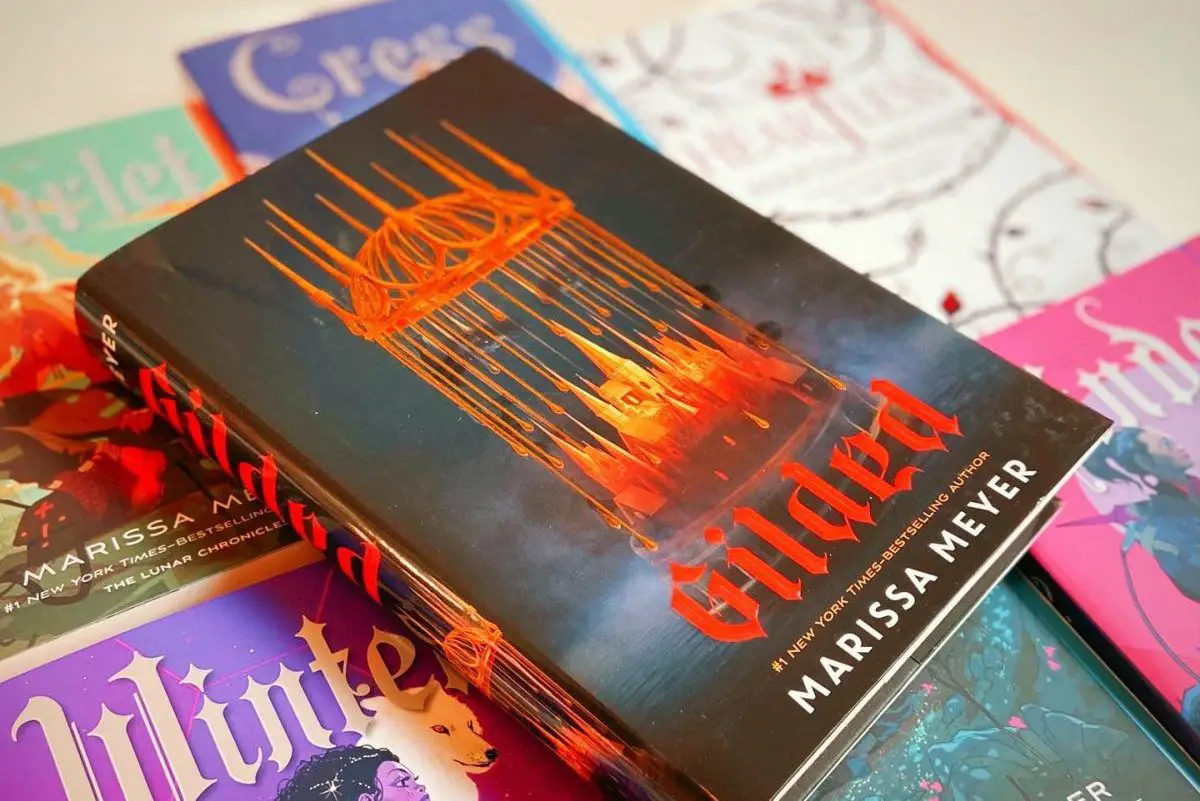Marissa Meyer’s novel “Gilded” retells the classic story of Rumpelstiltskin in an exciting and fresh way. Ever since its release in late 2021, it has quickly won the hearts of readers due to its fascinating plot, which draws on a story people know and reinvents it into something all its own. The sequel is slated for release in November, about a year from the publication of “Gilded.” Meyer has announced the title — “Cursed” — and has revealed the stunning black and red cover.
“Gilded” follows Serilda, a girl with a passion for telling stories she’s invented. After one of her lies goes too far, the nefarious Erlking demands she prove that she can spin straw into gold. Enter Gild, a mischievous ghost who enjoys Serilda’s stories and offers to help her deliver on her promise. The Erlking, however, grows greedy, and it becomes clear that he wants more than just gold. Through a twisting journey of discoveries and betrayals, Serilda helps Gild realize exactly how much the Erlking has taken from him. “Cursed” will pick up where “Gilded” left off, with Gild and Serilda fighting to break the curses that plague them while attempting to stop the Erlking from carrying out his evil plans. However, Serilda and Gild must cope with the fallout of Serilda’s forced marriage to the Erlking while carrying Gild’s child.
Serilda and Gild are characters who break free from typical literary clichés. Gild, for one, is a ghost and has no memory of his past life. Bound to the Erlking’s palace, he has no recollection of the circumstances that confined him there. Therefore, his relationship with Serilda represents a fresh start — for both of them. Serilda acknowledges that Gild’s feelings for her may very well be born from a desire to feel a connection with anyone, while also realizing that her own emotions may be rooted in that same desire.
Serilda, just like Gild, feels lost and abandoned. She has been ostracized for her elaborate storytelling due to its perceived falsehood, and her mother is gone. She also loses her father once she is forced to confront the fact that he is not the man she knew. The relationship between Gild and Serilda strays from the typical narrative of soulmates who are perfect for one another and immediately fall in love. Instead, they may work as a couple simply because they’ve found one other — which only makes it all the more interesting as their relationship deepens and progresses.
Meyer is one of many authors who has mastered the art of retelling — taking a classic tale and turning it into something new and interesting, either by including a new setting or adding twists to the original story. One such retelling is Meyer’s “Heartless,” a story that explores the backstory of the infamous Queen of Hearts. “Heartless” delves into how an innocent girl named Cath became the cold Queen of Hearts, making her a sympathetic character who becomes someone unrecognizable after losing the love of her life. Whether it be a fairy tale, legend or fable, retellings are compelling because they bring something new to light from an old narrative.
Retellings can range from twists on fairy tales like Meagan Spooner‘s reinterpretation of “Beauty & the Beast” in “Hunted”; to mythological retellings such as “Circe” by Madeline Miller; to modern remakes of classics like “Pride & Prejudice,” seen in “Pride” by Ibi Zoboi.
Fans of Meyer’s retellings may also enjoy “House of Salt and Sorrows” and “Small Favors” by Erin A. Craig. The former is a dark retelling of “The Twelve Dancing Princesses,” where the enchantment of the 12 sisters who go out dancing every night turns sinister. The latter is also a retelling of Rumpelstiltskin, and although the similarities are more subtle, it retains the element of a mysterious love interest who grants wishes at a price. It is fascinating to see how different authors can grow, change, adapt and reinterpret these classic tales and ideas, adding new perspectives and fun elements to the familiar.
“The Lunar Chronicles,” a series of reimagined fairy tales in a futuristic setting by Meyer, are wildly popular with readers, but there is something special about “Heartless” and “Gilded.” Meyer’s strong female protagonists, doomed romances and willingness to put her characters through great tragedy and peril, are all trademarks of her incredible retellings. Serilda has help from a few awesome characters, but she has a strong spirit that can’t be broken even after all the trials she goes through, such as when the Erlking goes back on his word and kills the children whom Serilda is fond of, or when she is forced to marry the Erlking to protect her unborn child.
The Erlking decides to make Serilda his bride and to publicly claim her child as his own, effectively putting an end to Serilda and Gild’s budding romance before it even began. To protect both Gild and the child and prevent further angering the Erlking, Serilda lies and ensures that Gild can never know her child is his. She must cooperate with the Erlking for not only his sake, but for the sake of the ghosts of the children who serve as Serilda’s companions, haunting both literally and figuratively. The devastation and havoc that comes with ghosts figure prominently in “Gilded.”
Another compelling element of Meyer’s retellings is that the readers already know the ending to some extent. For example, readers already know that in “Heartless,” Cath and her love interest could not end up together — because, of course, Cath needed to be marked by tragedy in order to come into her own as the queen who demands, “Off with their heads!” With “Gilded” the reader knew that Gild, who turned straw into gold for Serilda so she could satisfy the Erlking’s demands and stay alive, would eventually collect on the debt Serilda owed him — her firstborn child. The twist came when that very child was conceived with Gild as the father. Gild is bound to the confines of his curse and can’t alter the terms of the debt that he is owed. Though he does not want to take from Serilda, he is bound to take her child.
Undoubtedly, “Cursed” will answer the questions raised by the ending of “Gilded.” Will Gild realize that it’s his child? If so, how will this affect him when he finally collects the child? Is there a possibility of a love triangle between Serilda, Gild and the Erlking, or is the Erlking simply the antagonist through and through? How will the Erlking be defeated and the curses broken? At what cost? Hopefully these questions and more will be answered with the release of “Cursed,” the end to Meyer’s new duology.

















